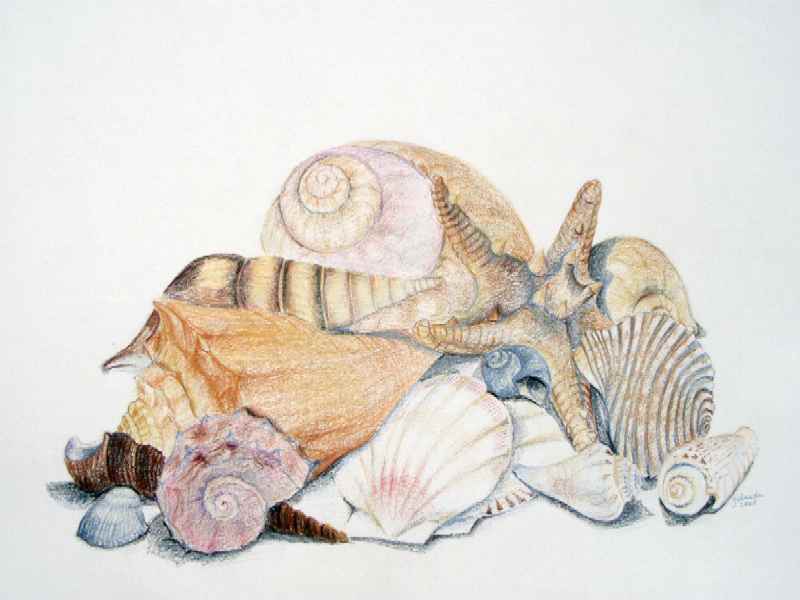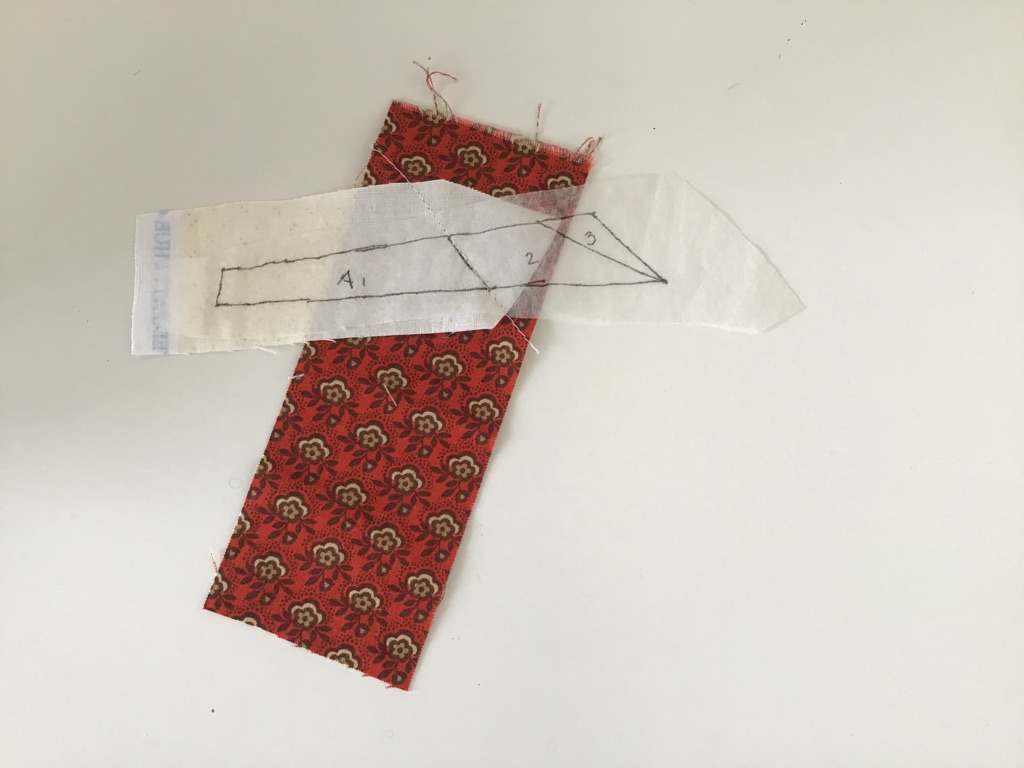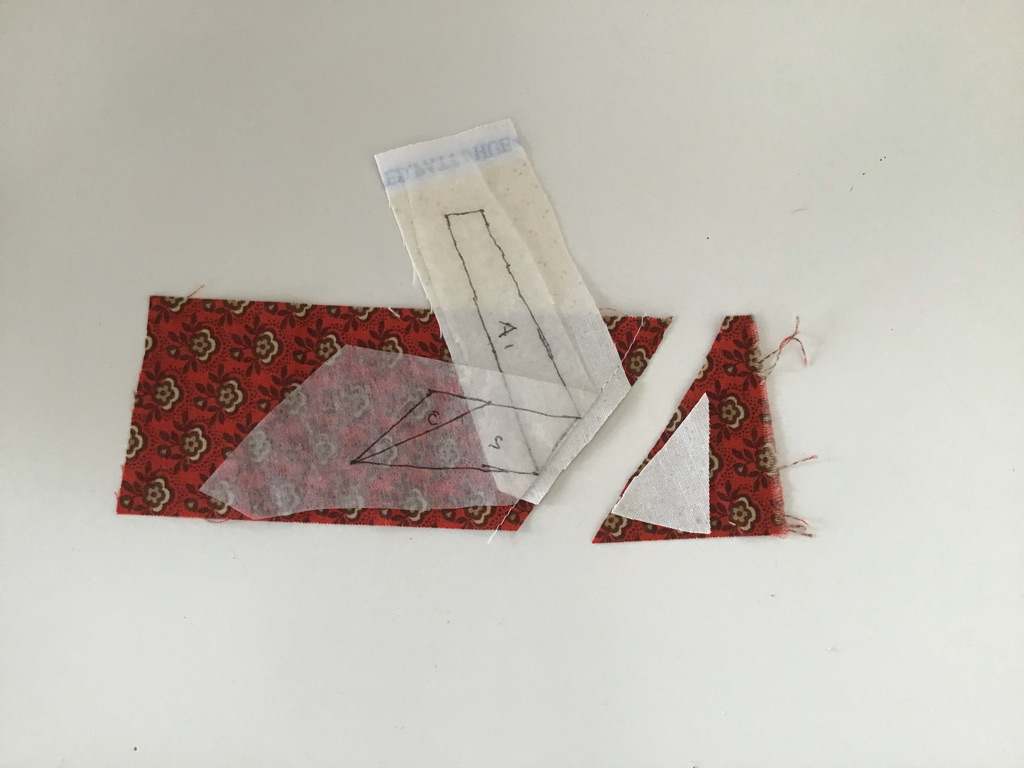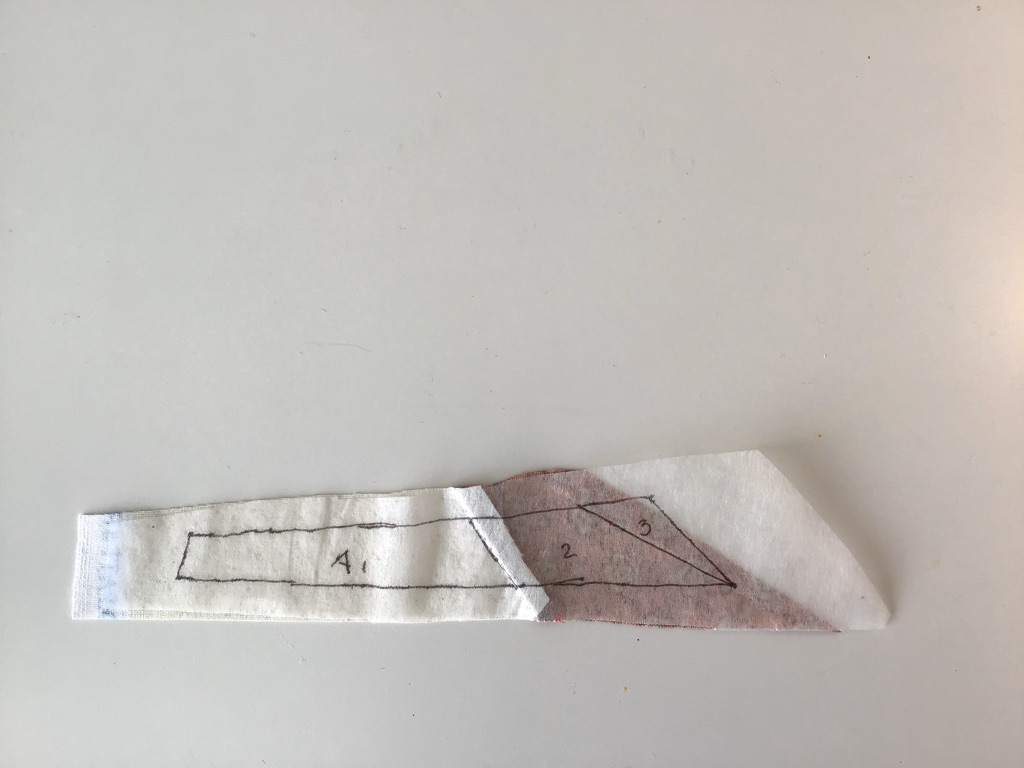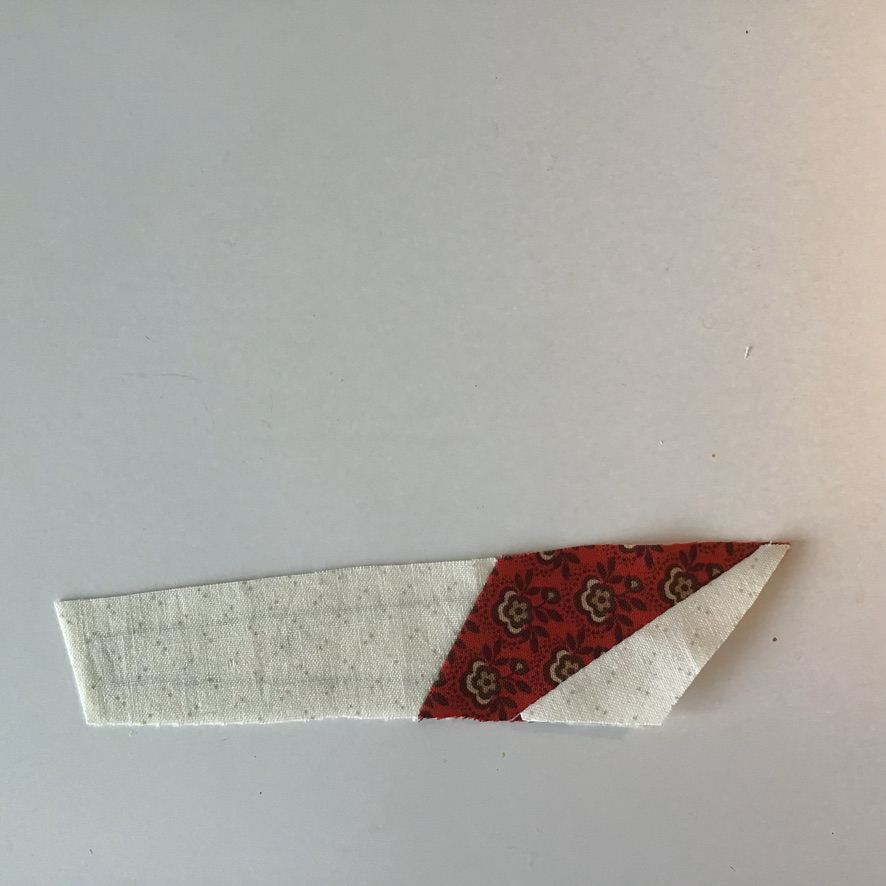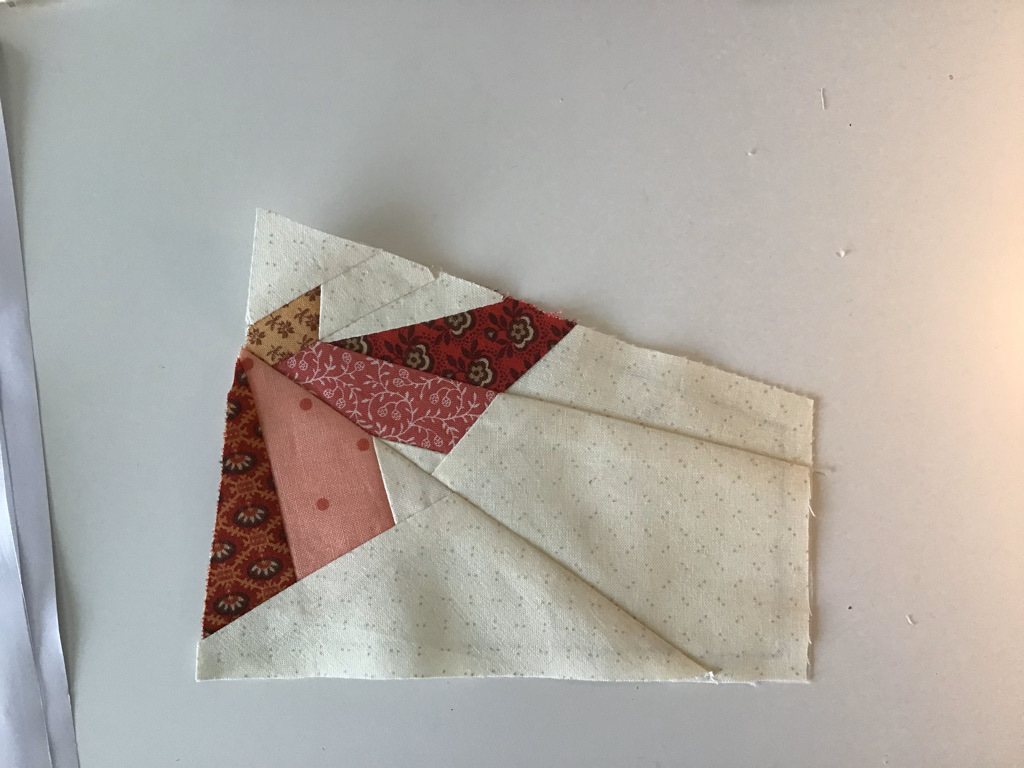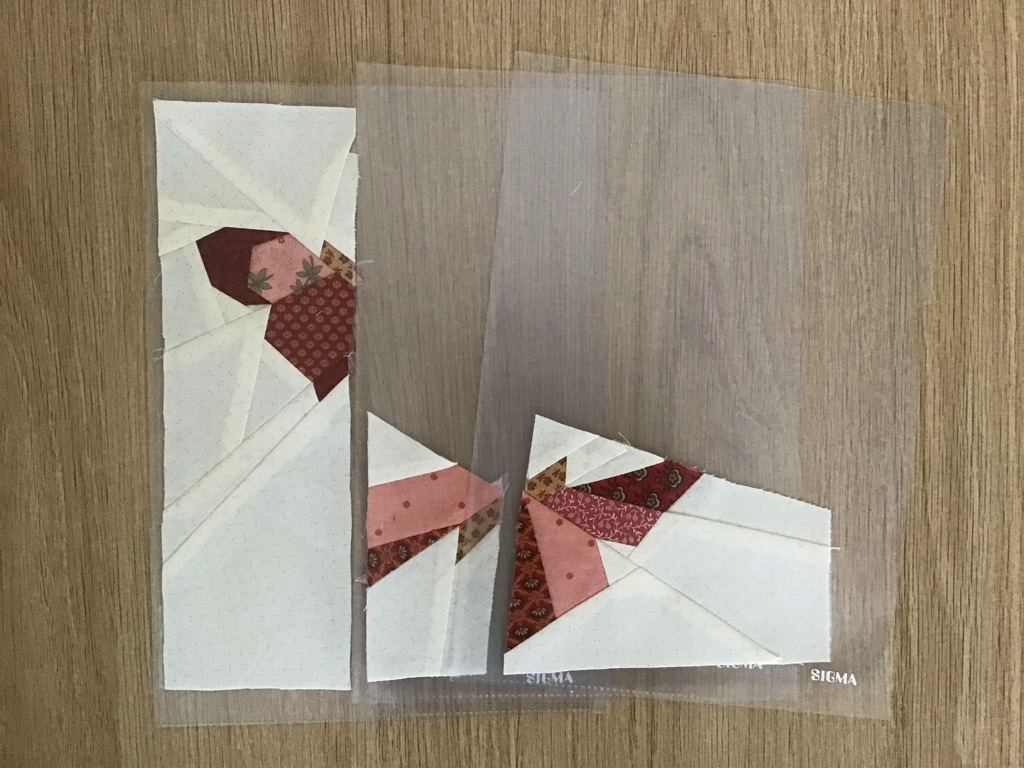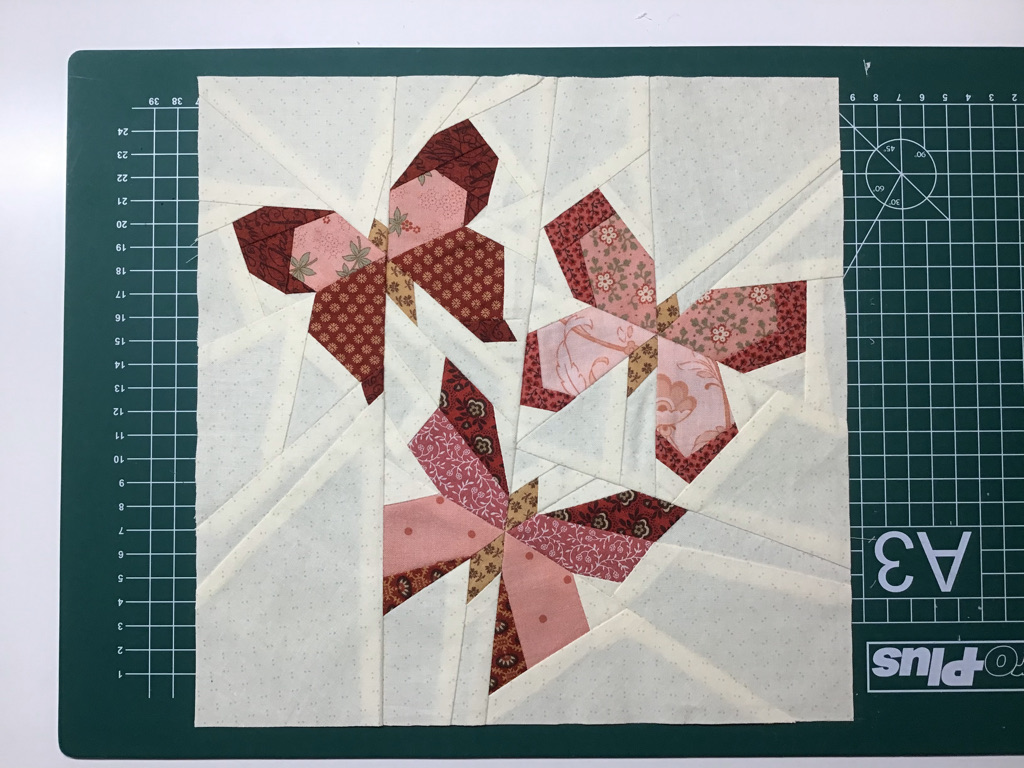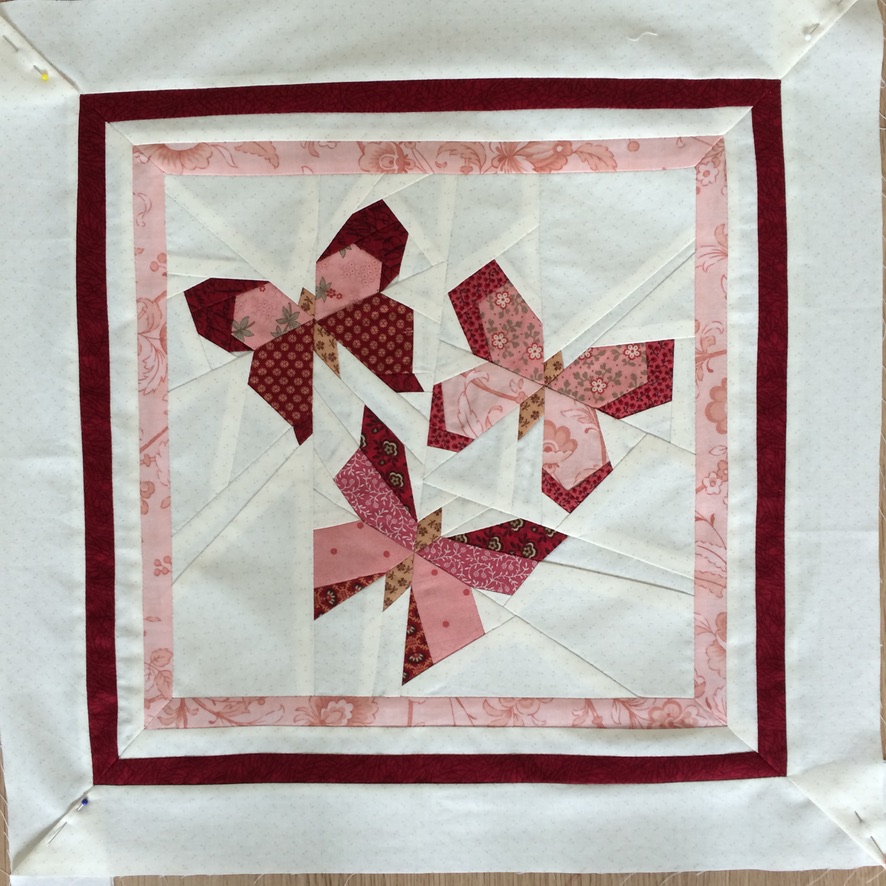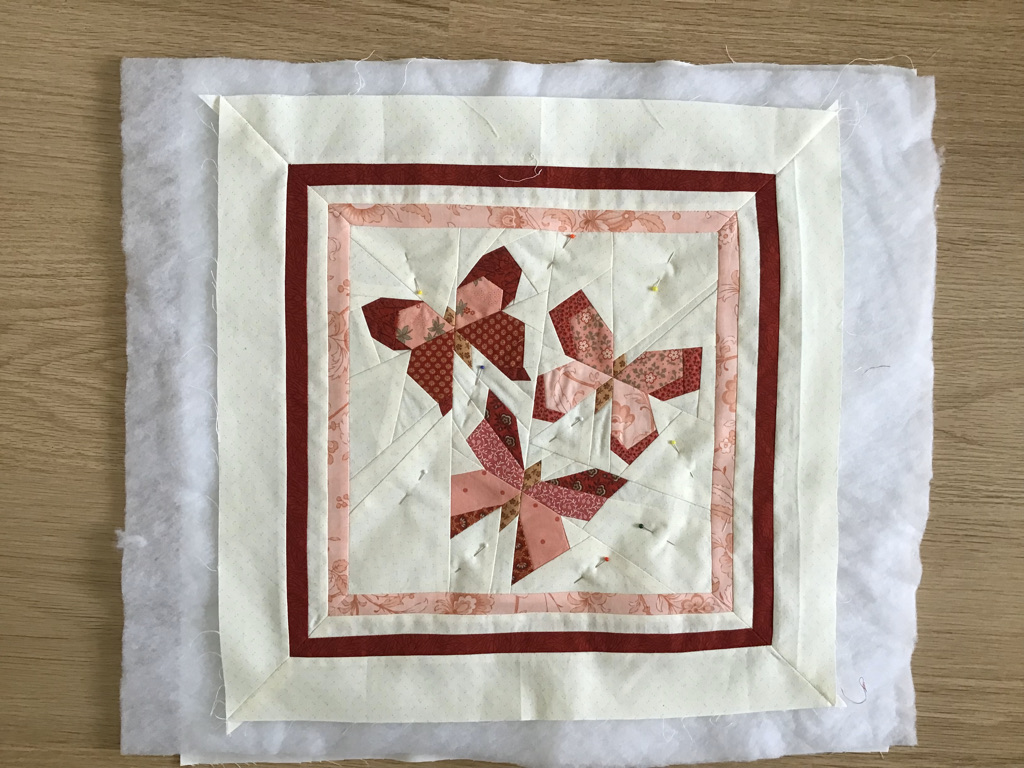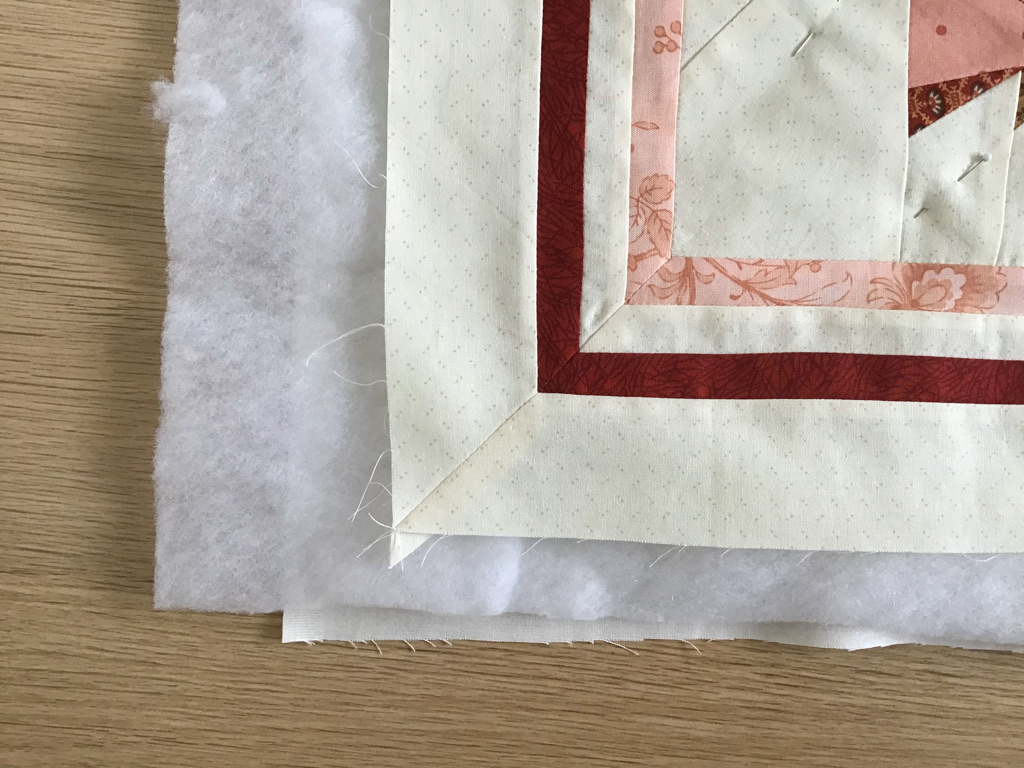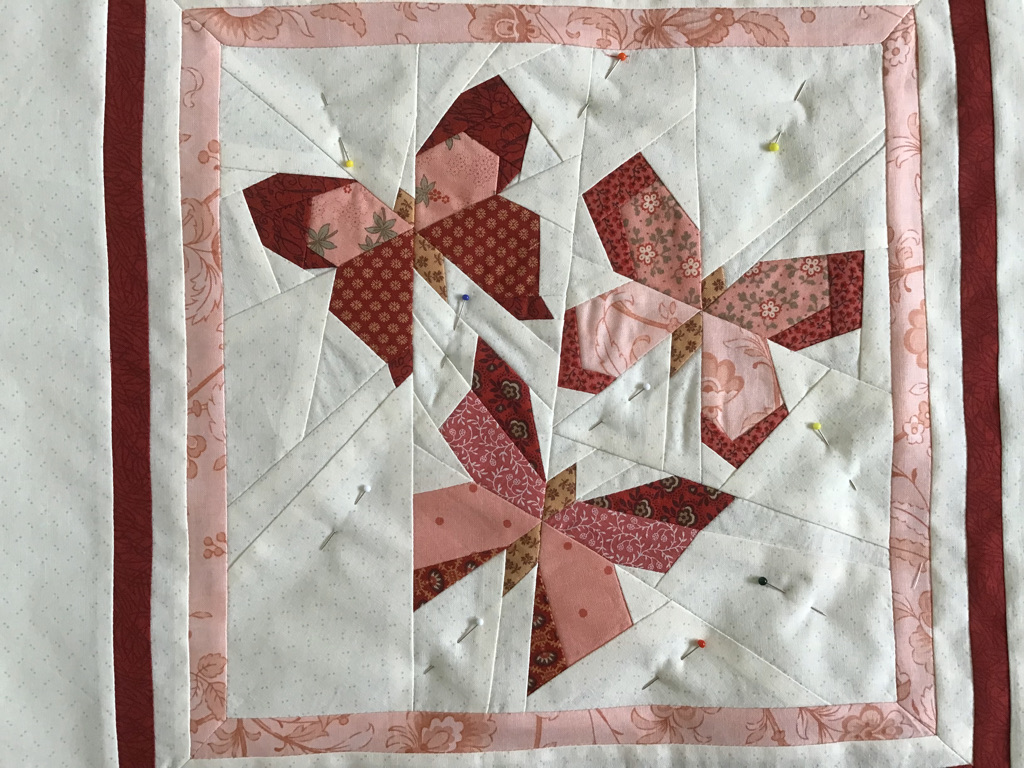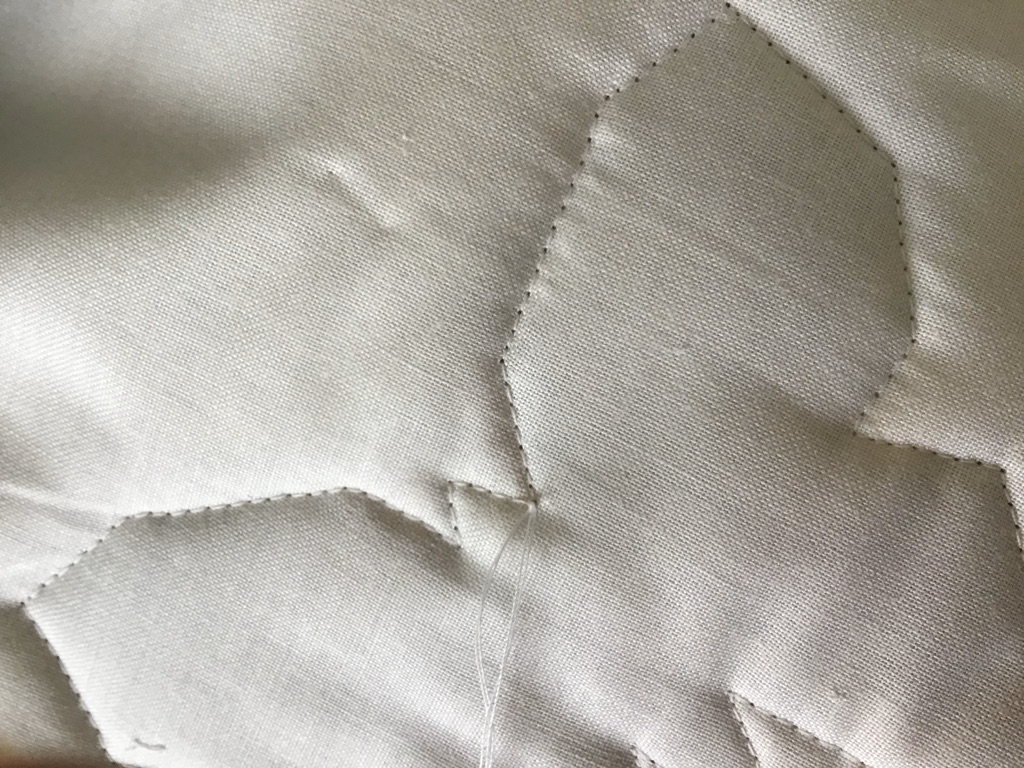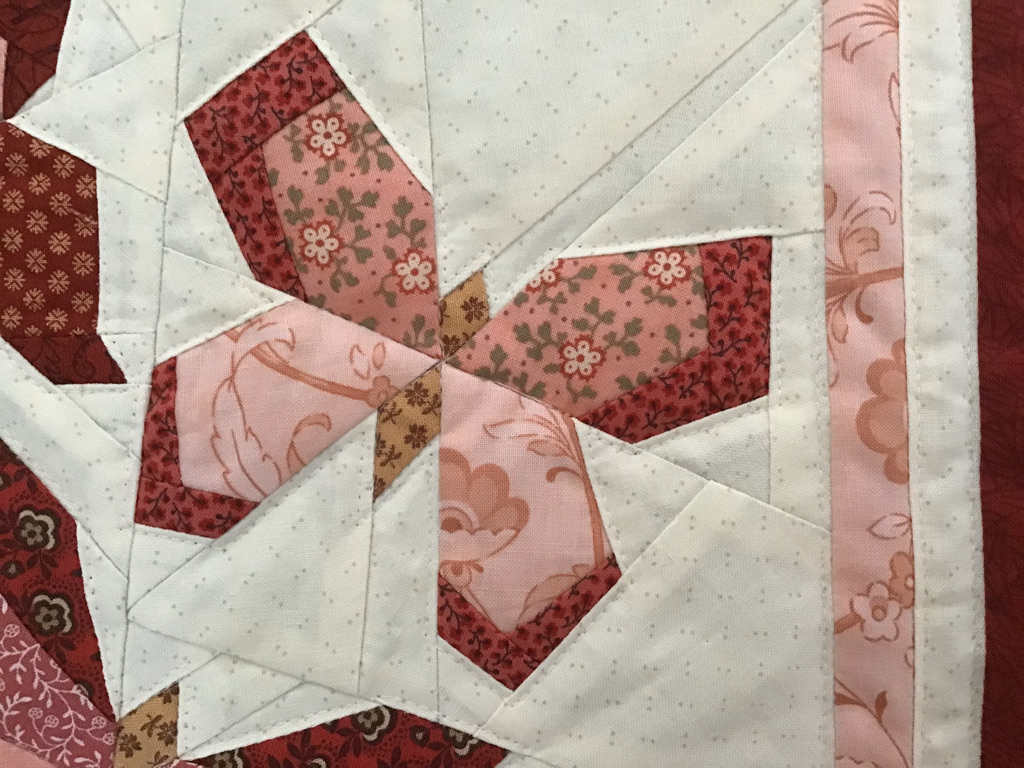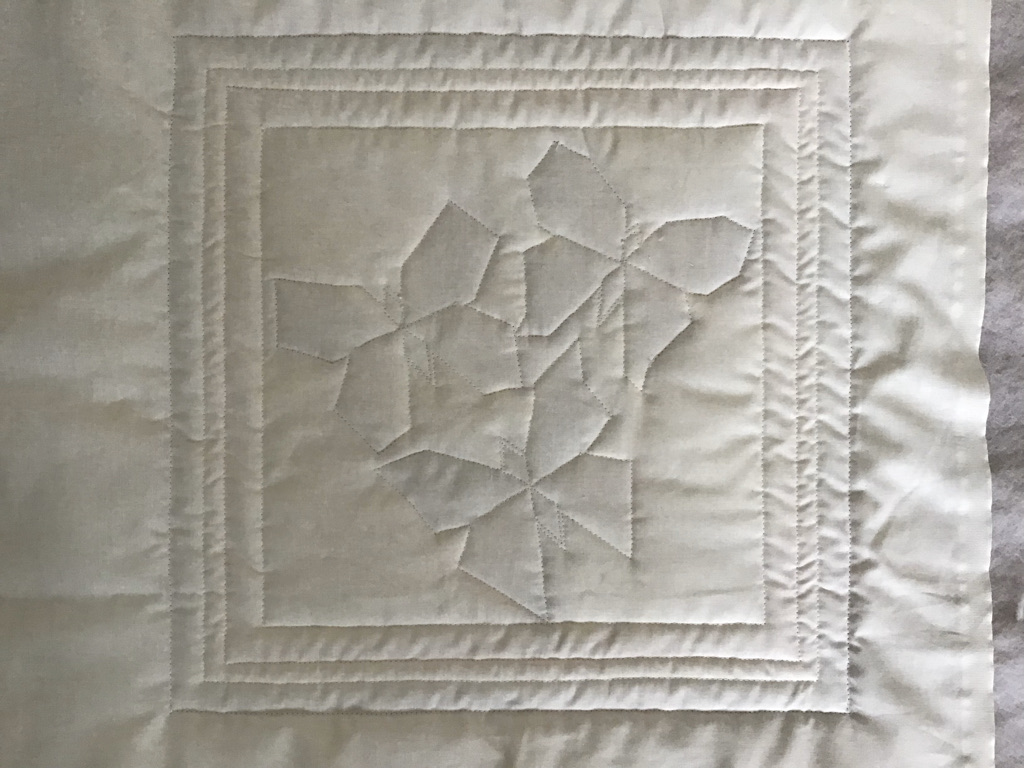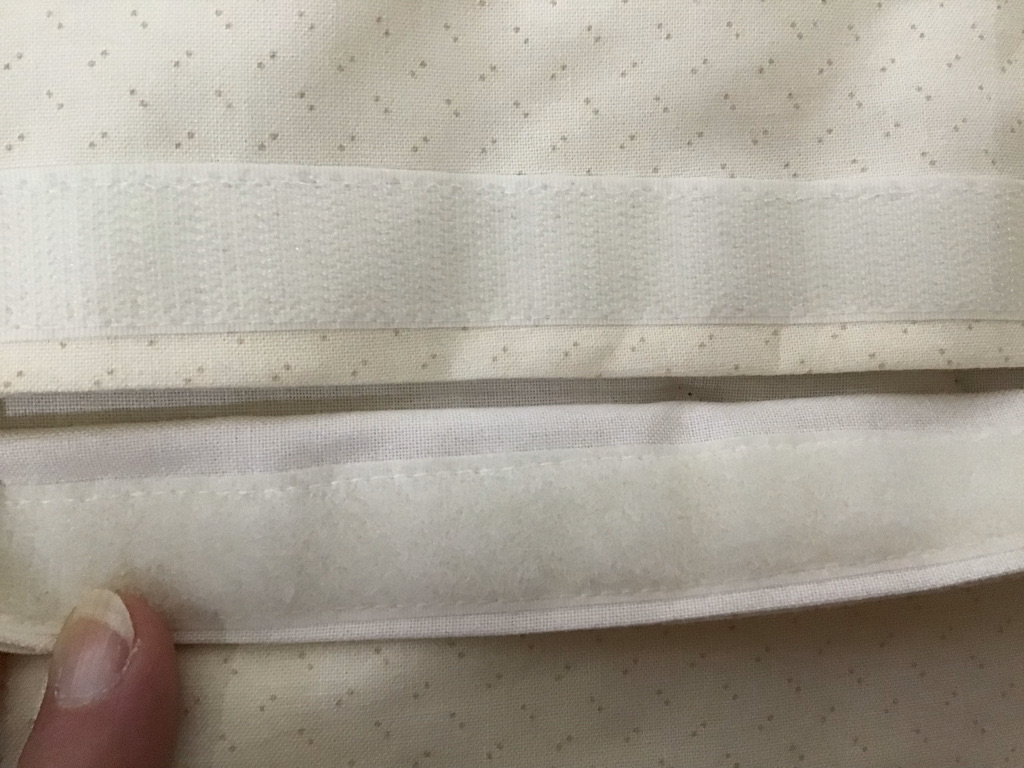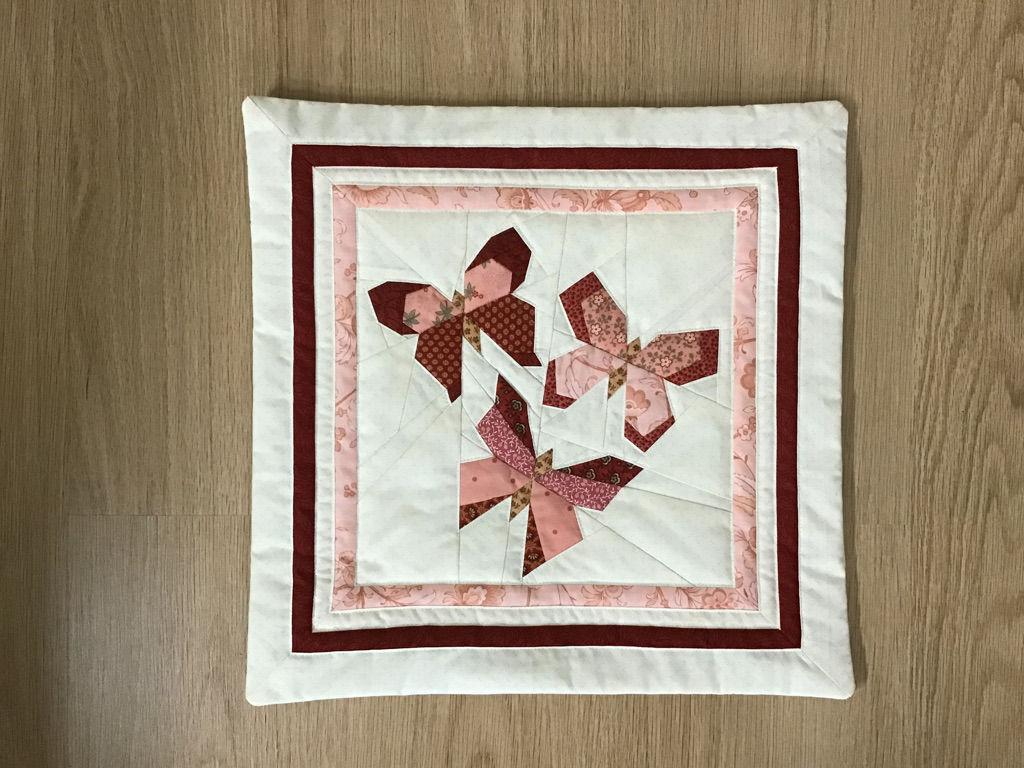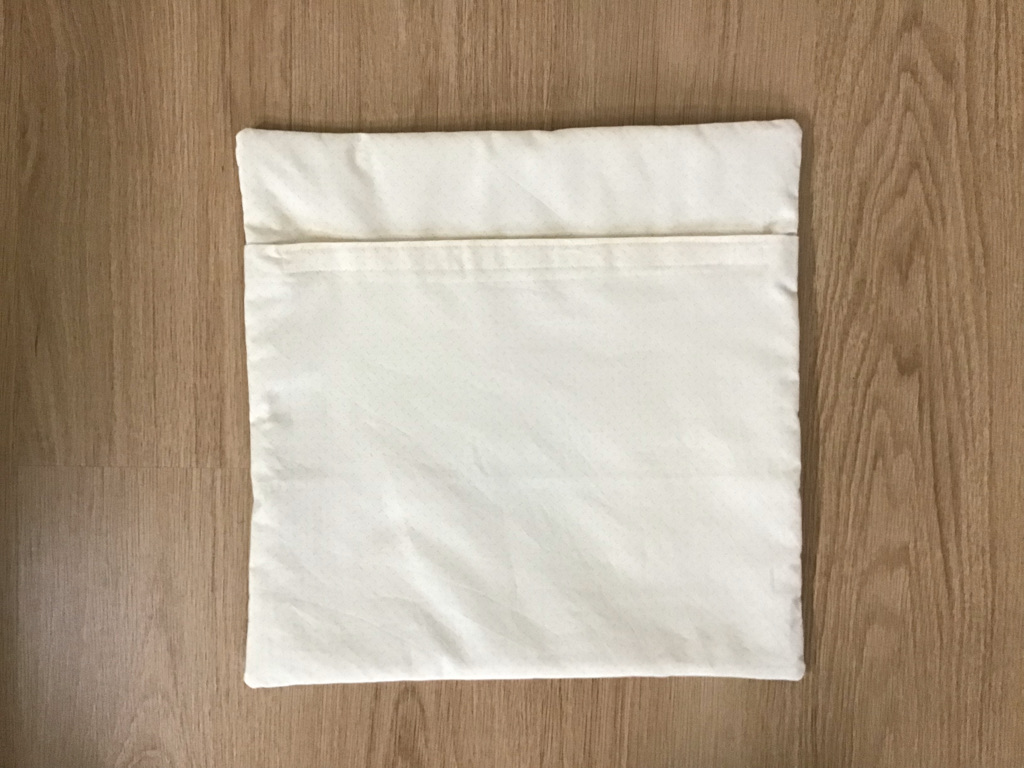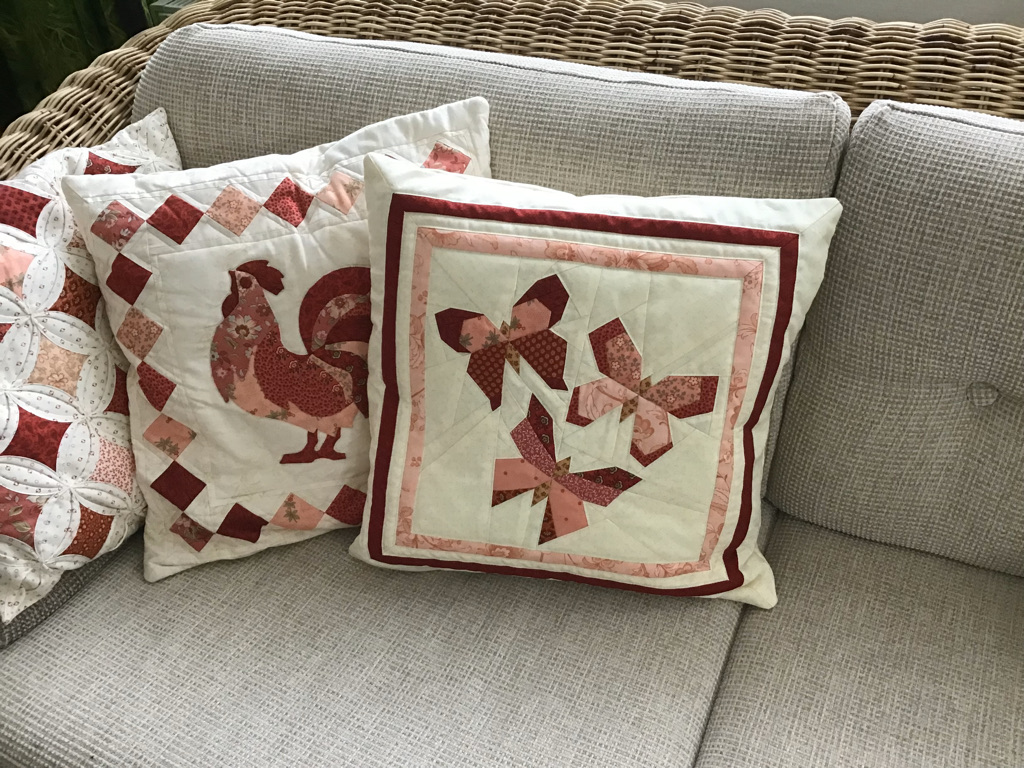Now the Sewing Work Can Begin.
I start with pattern part A, and place pattern part A1, which is the part where template K is pinned, on the fabric. I sew on the back of the fabric, over the lines on the tea bag paper. So, the fabric is placed with the right side down. Make sure the fabric covers the entire piece and that there is enough fabric extending beyond the pattern everywhere. The pieces will need to be sewn together again later, so there should be enough seam allowance left.
For me, part A1 is the light cream-colored fabric. Part A2 is the next part, and it should be placed so that when the seam between A1 and A2 is sewn and part A2 is folded back, the entire pattern part A2 is covered. It might sound complicated, but you can see what I mean in the photo. When you sew, you should be able to read the text. If not, then you have your paper piecing part upside down. Remove the fabric pieces and make sure to sew them to the correct side of the paper piecing pattern part.
|
| Trim the excess fabric, making sure to leave about a foot wide or 1/4 inch remaining. Be careful not to cut the paper piecing pattern. |
| Fold the just-sewn part to the right side and press it nice and smooth. You can read the text in the photo next to it, so the fabric is sewn to the correct side of the paper piecing pattern part. |
| You can also trim excess fabric on the sides. Make sure there is a seam allowance of about a foot wide or 1/4 inch all around. You'll need this seam allowance to sew the pieces together. |
| Continue with part A3 in the same way you did with part A2. |
| Assemble all paper piecing pattern parts in the same way. If you have multiple parts, you can also assemble them together. Once parts A and B are done, they can be joined. Then part C can be added, and finally, when part D is finished, it can also be added to part ABC. Always check your pattern to see if your parts can really be joined. |
| I store parts that are sewn together in sleeves, this keeps everything organized and makes it easy to see which parts can already be joined together. |
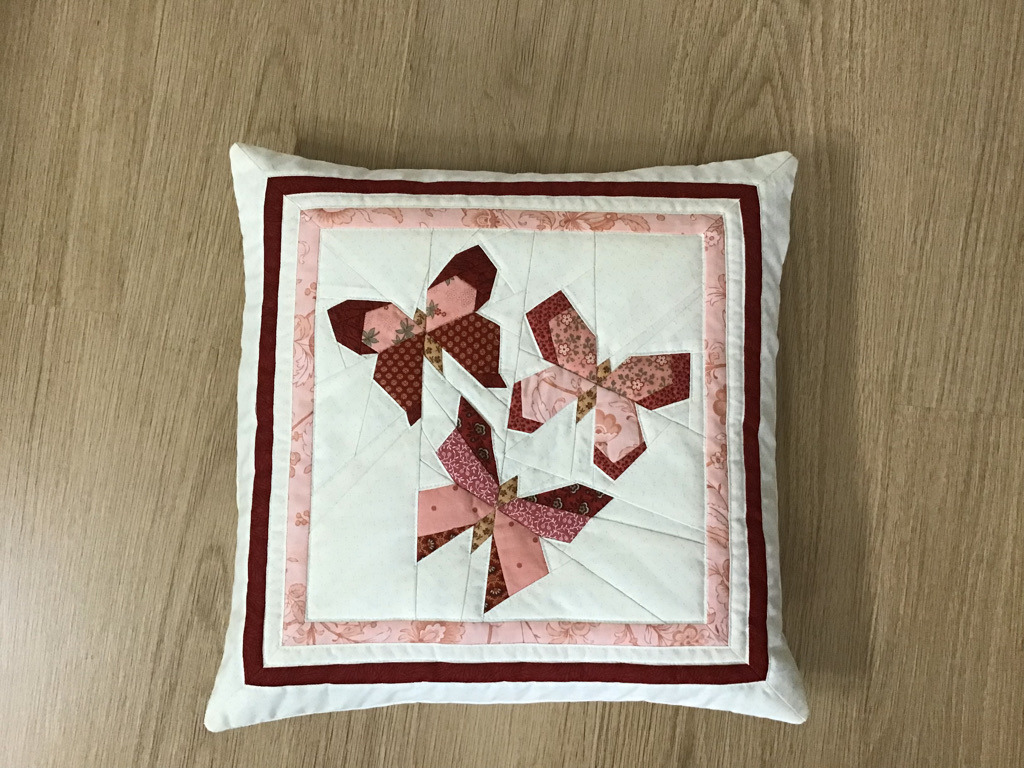 Pillows are a beautiful subject to try out a new technique. This is a pillow that utilizes the paper piecing technique. I've already made a few pillows in these warm red tones, so a third one won't hurt. The pillow measures 40x40 cm. For an extensive explanation of paper piecing, you can also view this article.
Pillows are a beautiful subject to try out a new technique. This is a pillow that utilizes the paper piecing technique. I've already made a few pillows in these warm red tones, so a third one won't hurt. The pillow measures 40x40 cm. For an extensive explanation of paper piecing, you can also view this article.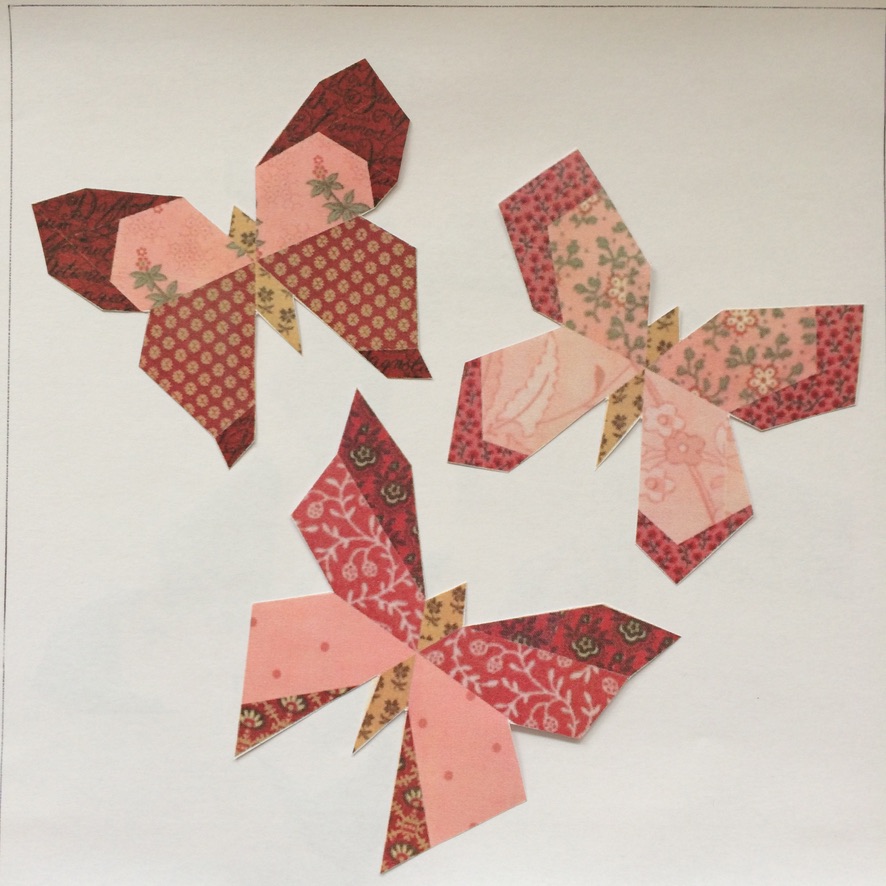 You can download the pattern of the pillow here. The pattern is a PDF. Before you begin, make sure to check if the squares on the measurement sheet are 1 inch each. If not, adjust your printer settings accordingly.
You can download the pattern of the pillow here. The pattern is a PDF. Before you begin, make sure to check if the squares on the measurement sheet are 1 inch each. If not, adjust your printer settings accordingly.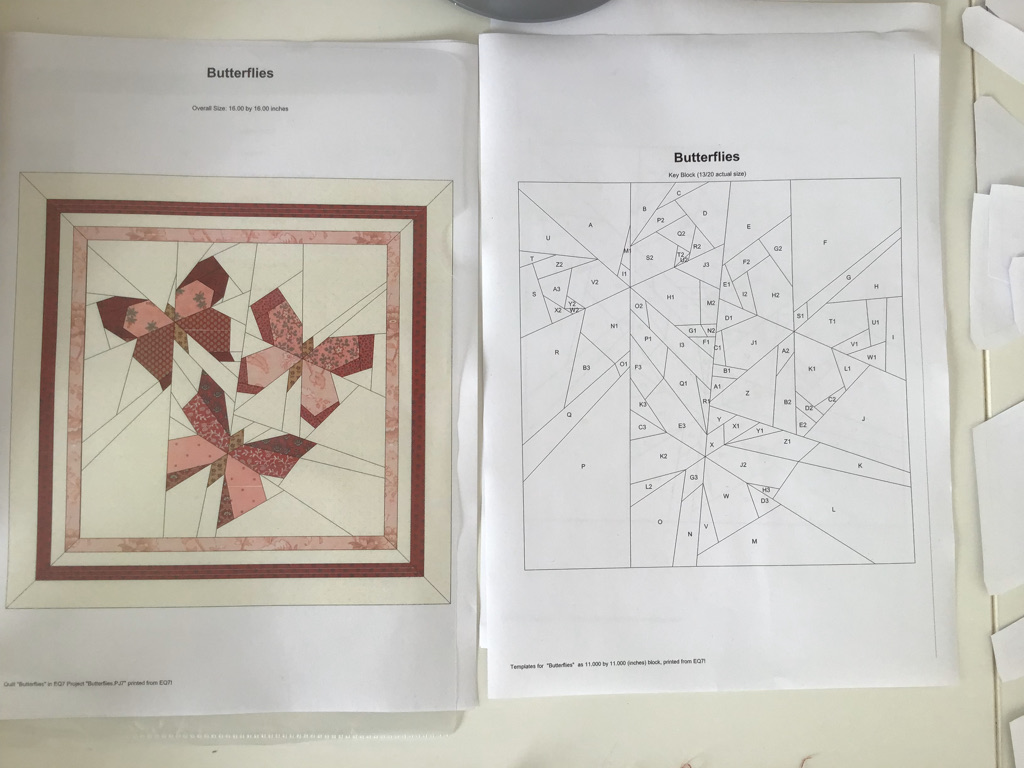 The pattern includes:
The pattern includes: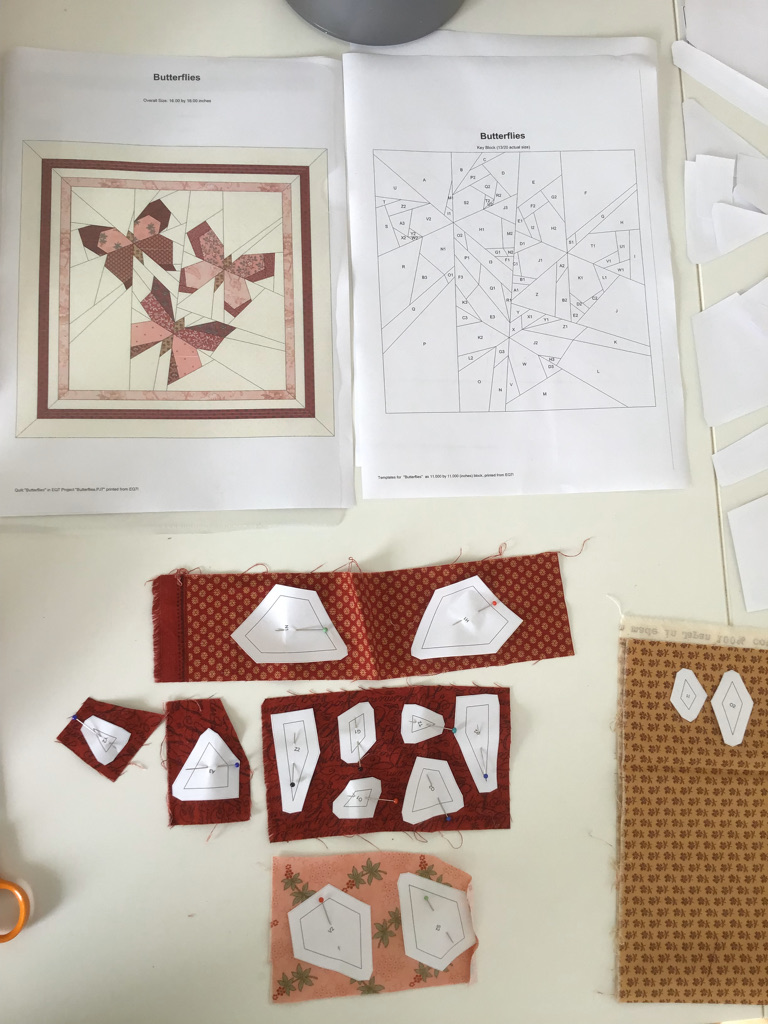 Start by cutting out all the templates (6). Place the templates on the correct fabric and secure them with a single pin. In the overview (5), you can see where each piece belongs in the pattern and choose the correct fabric accordingly. Once you've placed all the pieces on the correct fabric, you can cut them out. Cut the templates generously from the fabric; it doesn't need to be very precise.
Start by cutting out all the templates (6). Place the templates on the correct fabric and secure them with a single pin. In the overview (5), you can see where each piece belongs in the pattern and choose the correct fabric accordingly. Once you've placed all the pieces on the correct fabric, you can cut them out. Cut the templates generously from the fabric; it doesn't need to be very precise.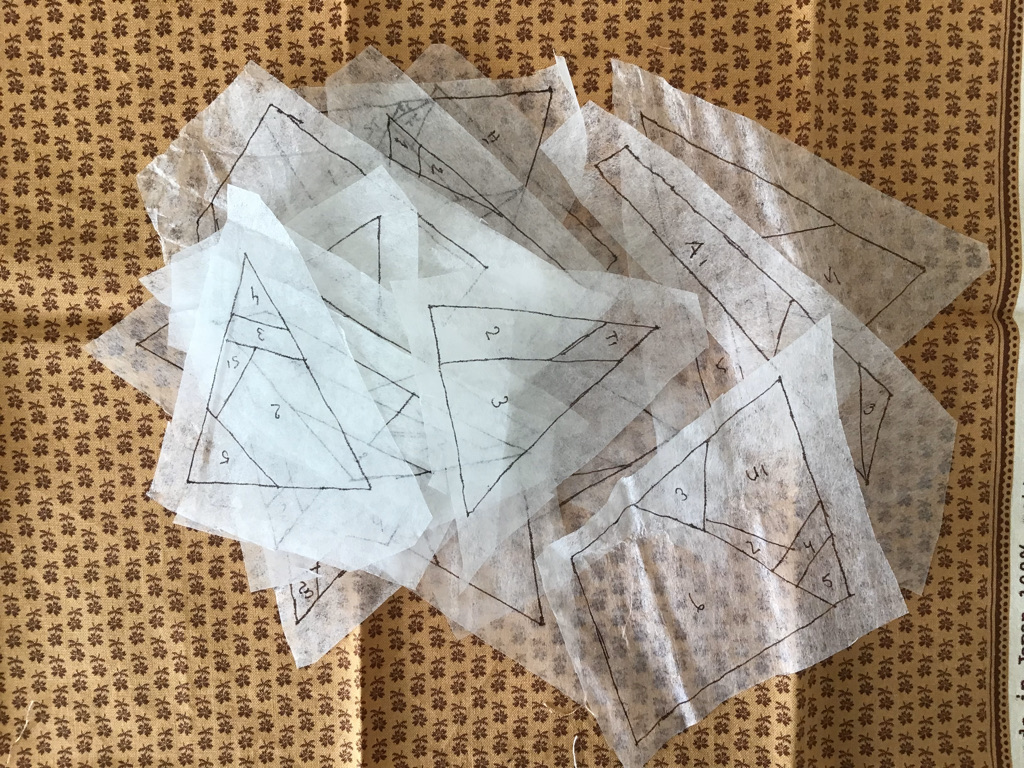 Transfer the paper piecing patterns (4) onto tea bag paper. If you search for tea bag paper online, you'll find various online stores that sell it. The pieces of (4) are already mirrored, so you can place the translucent tea bag paper over the print and trace the pattern with a pencil or thin pen. Make sure to transfer all the text; this prevents you from accidentally sewing on the wrong side and messing up your pattern. I always make sure the patterns are not too close to each other so I can cut them out with some space.
Transfer the paper piecing patterns (4) onto tea bag paper. If you search for tea bag paper online, you'll find various online stores that sell it. The pieces of (4) are already mirrored, so you can place the translucent tea bag paper over the print and trace the pattern with a pencil or thin pen. Make sure to transfer all the text; this prevents you from accidentally sewing on the wrong side and messing up your pattern. I always make sure the patterns are not too close to each other so I can cut them out with some space.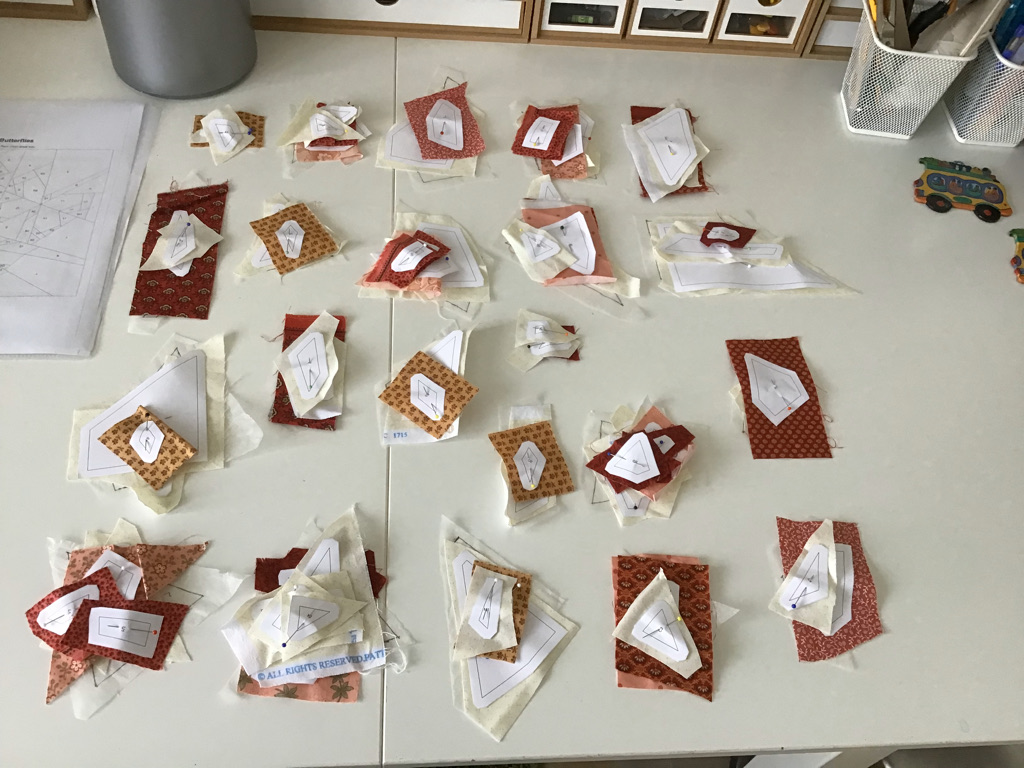 Now, sort all the cut-out templates and paper piecing patterns. Place the corresponding pattern pieces on each paper piecing pattern you've cut from tea bag paper. This prevents you from making mistakes when sewing them together.
Now, sort all the cut-out templates and paper piecing patterns. Place the corresponding pattern pieces on each paper piecing pattern you've cut from tea bag paper. This prevents you from making mistakes when sewing them together.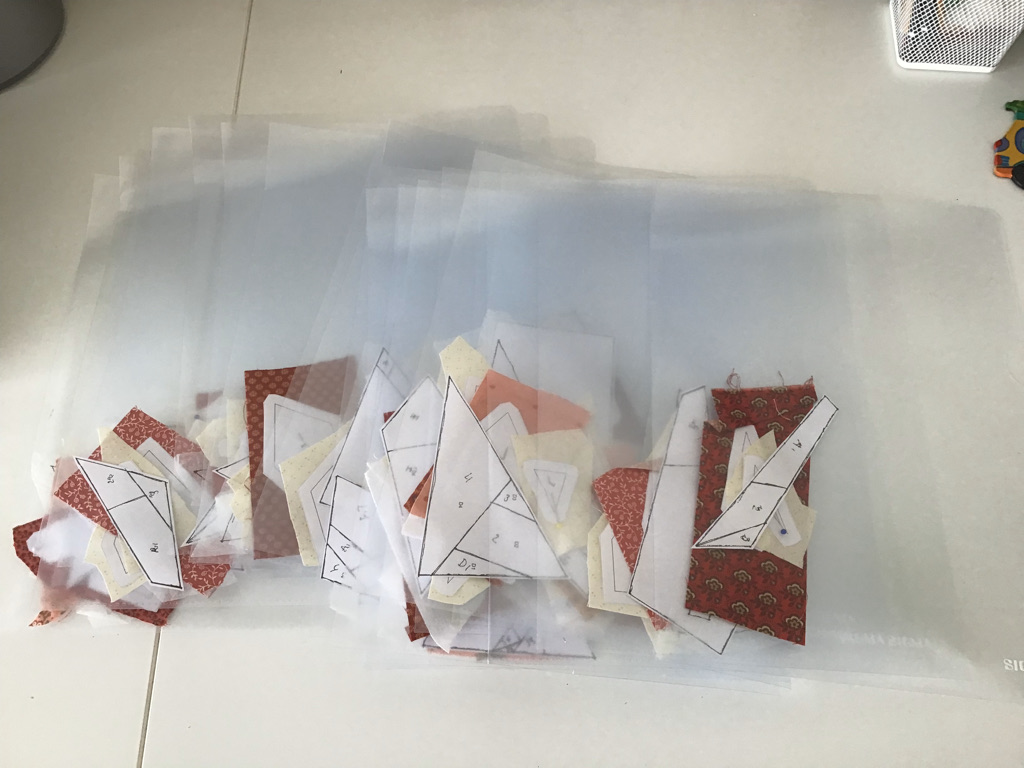 I find it convenient to put each set in a transparent sleeve now. I don't always have time to sew everything together in one go, so this keeps it organized. I sort the sleeves, with paper piecing pattern A in the front and part U, the last part, at the back. All the preparatory work is now done.
I find it convenient to put each set in a transparent sleeve now. I don't always have time to sew everything together in one go, so this keeps it organized. I sort the sleeves, with paper piecing pattern A in the front and part U, the last part, at the back. All the preparatory work is now done.


